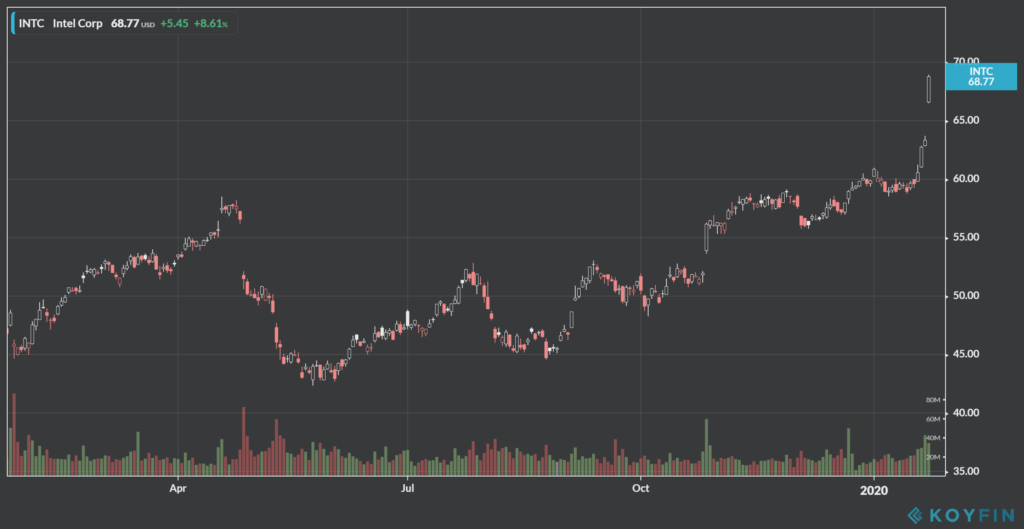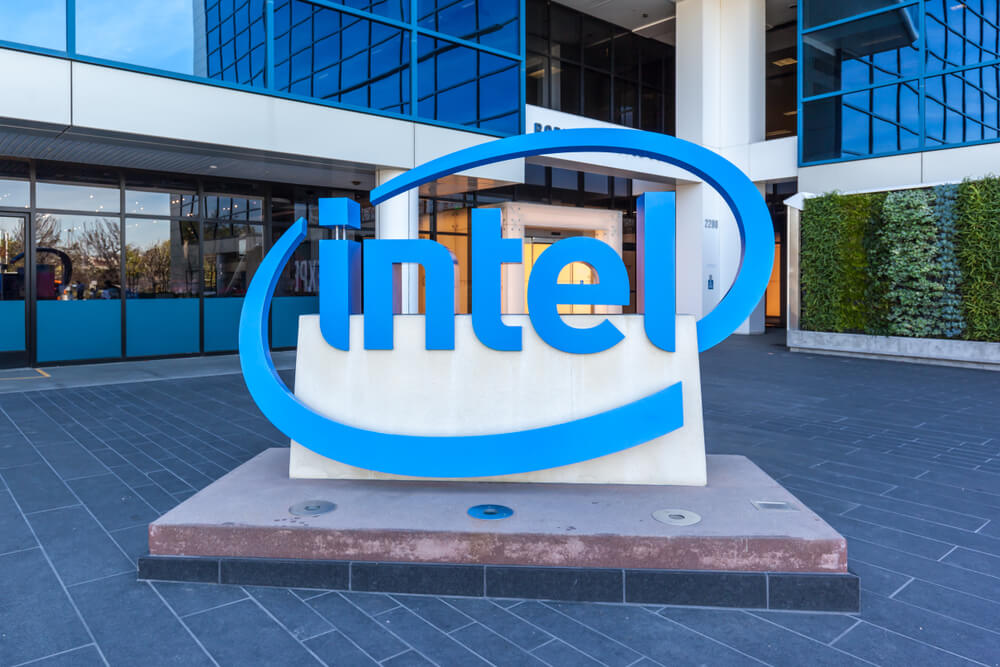Shares of Intel Corp. were up more than 8.5% through midday trading Friday after releasing a strong 2020 outlook.
The company hit a new 52-week high Friday as shares rose as high as $68.96 in the morning. That’s the highest the stock has traded in more than 20 years.
Intel (Nasdaq: INTC) reported earnings of $1.52 per share, topping analysts’ estimates of $1.25. Revenue came in at $20.2 billion — more than the $19.2 billion analysts projected. Its revenue was an 8% year-over-year increase.
Its PC chip sales were at $10 billion — a 2% increase — but its data center group recorded $7.2 billion in sales for the quarter, or a 19% increase year-over-year.

In its earnings call Thursday, CEO George Davis said there was still a need for caution as the company will likely face stiffer competition headwinds throughout the year.
“We expect total revenue to be more front-end loaded in the first half than we’ve seen historically,” Davis told analysts.
Intel’s biggest competitor in the processor space, Advanced Micro Devices (Nasdaq: AMD) has been touted better than Intel. Analysts have suggested Intel is a least a year behind AMD in producing a 10-nanometer microprocessor unit used for personal computers.
“We think Intel is benefiting from an improving macroeconomic climate versus company-specific improvements at this time,” RBC Capital Markets analyst Mitch Steves told Reuters, adding that he expects strong results from data center rivals AMD and Nvidia Corp. (Nasdaq: NVDA).
Looking ahead, Intel projected first-quarter earnings of $1.30 per share with revenue of $19 billion. If they hit those numbers, it would beat both earnings estimates ($1.04 per share) and revenue expectations ($17.1 billion).
On Thursday, analysts scurried to change price targets for the tech giant. Loop Capital Markets upped its price target to $59 from $50, but downgraded the company to “sell,” while Cowen moved its target to $64 from $55.
📈📈 Friday Morning's #Top10 Most Actively-Traded Stocks 📉📉
1. $INTC
2. $AMD
3. $AAPL
4. $BYND
5. $NFLX
6. $BABA
7. $TSLA
8. $BA
9. $AVGO
10. $AMZNSee the rest of today's trending stocks here: https://t.co/ulWhJgJZgh
Are you trading any of these names today? pic.twitter.com/clVbR7ITEq
— Investing.com (@Investingcom) January 24, 2020
The Street and CNBC analyst Jim Cramer said any attempt to downgrade Intel at this point would be a mistake.
“Intel’s own manufacturing constraints in the value end of the computing market has opened the competitive door for AMD, which looks to be ending the year at about a 20% share of the market,” he wrote in a note. “AMD is also taking advantage of Intel’s shortages to be more aggressive on price, which should be a growing headwind for Intel as the year progresses in both lower processor ASPs and accelerating AMD share gains.
“Intel is also being cautious regarding its Data Center Business, which grew 19% in the quarter, more than 3x what the street had projected.”





